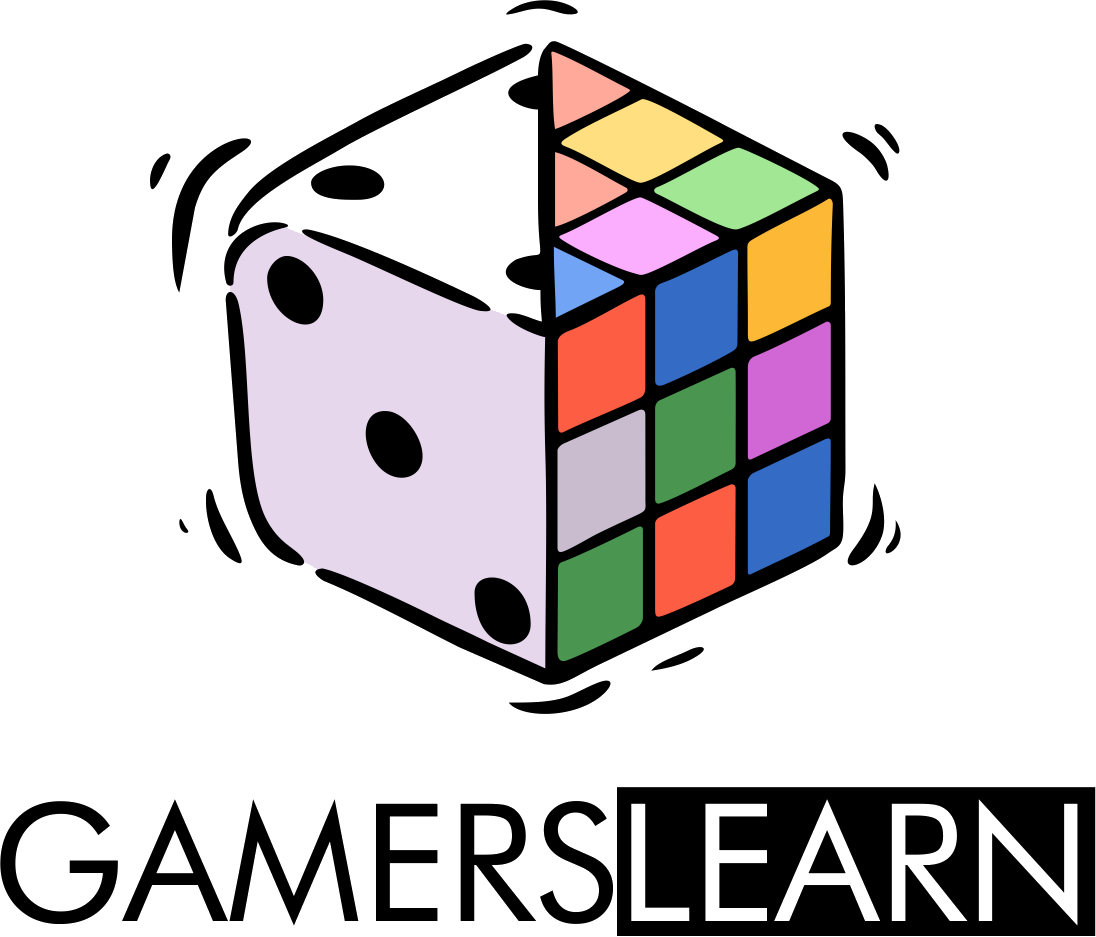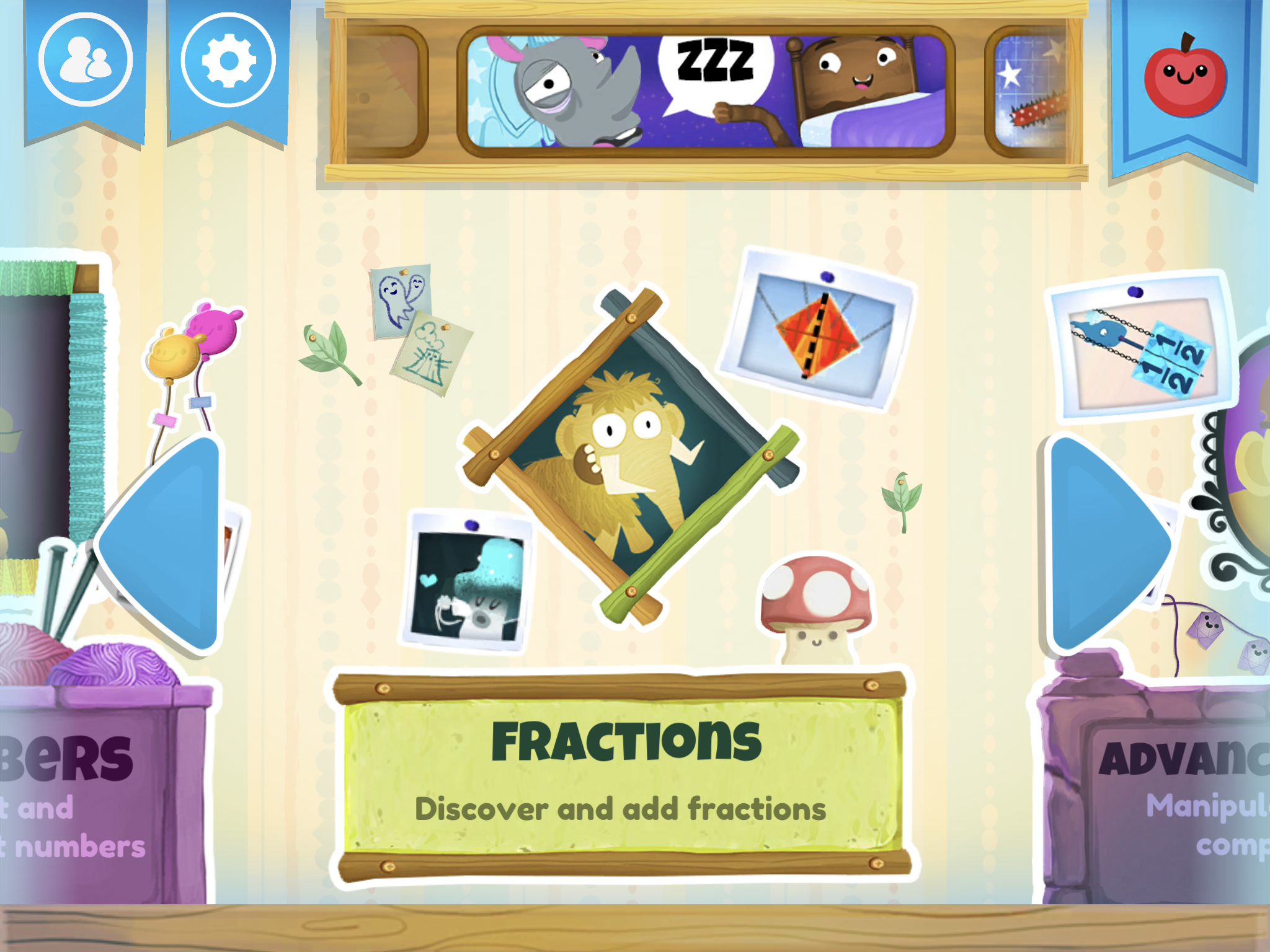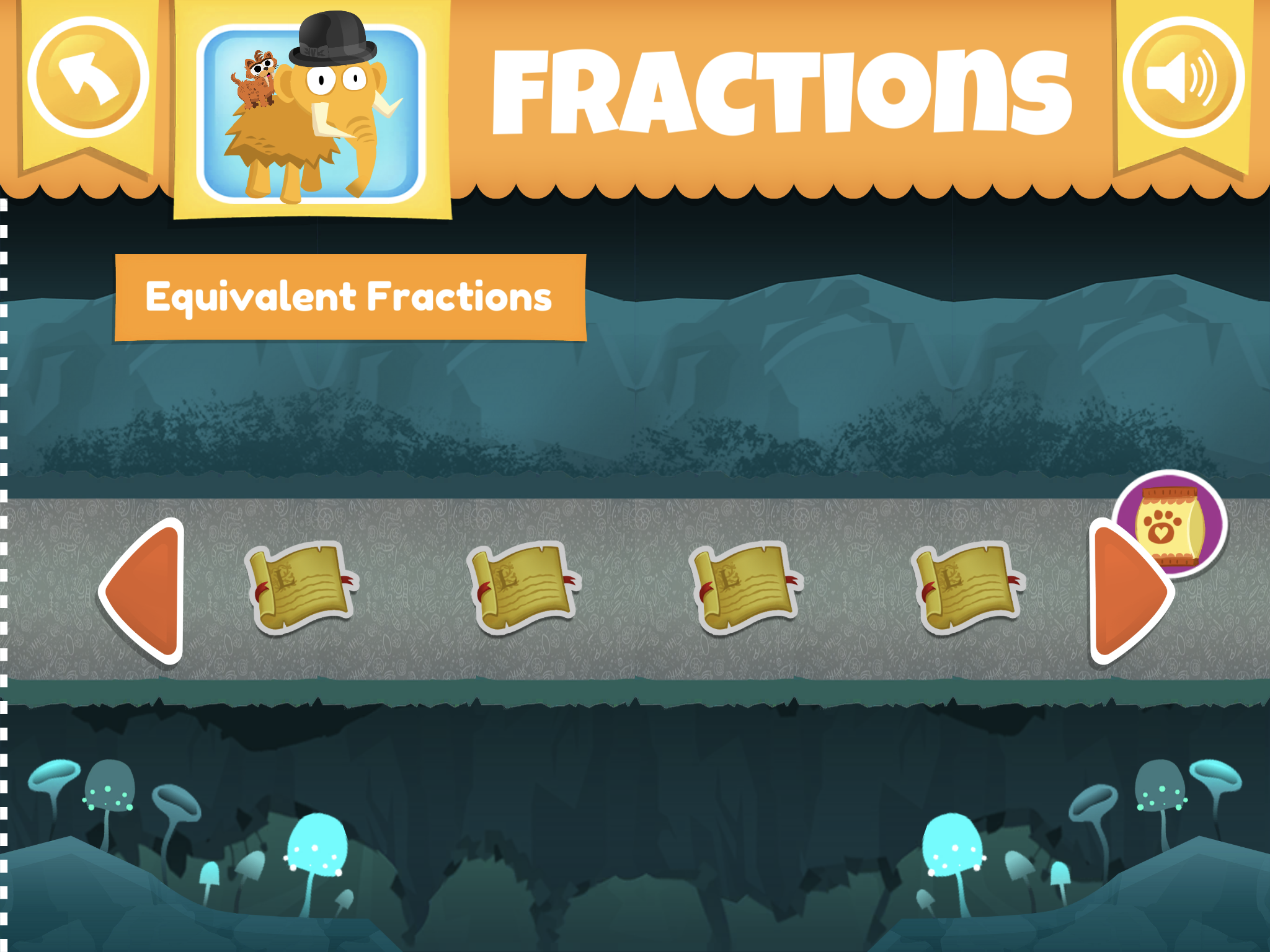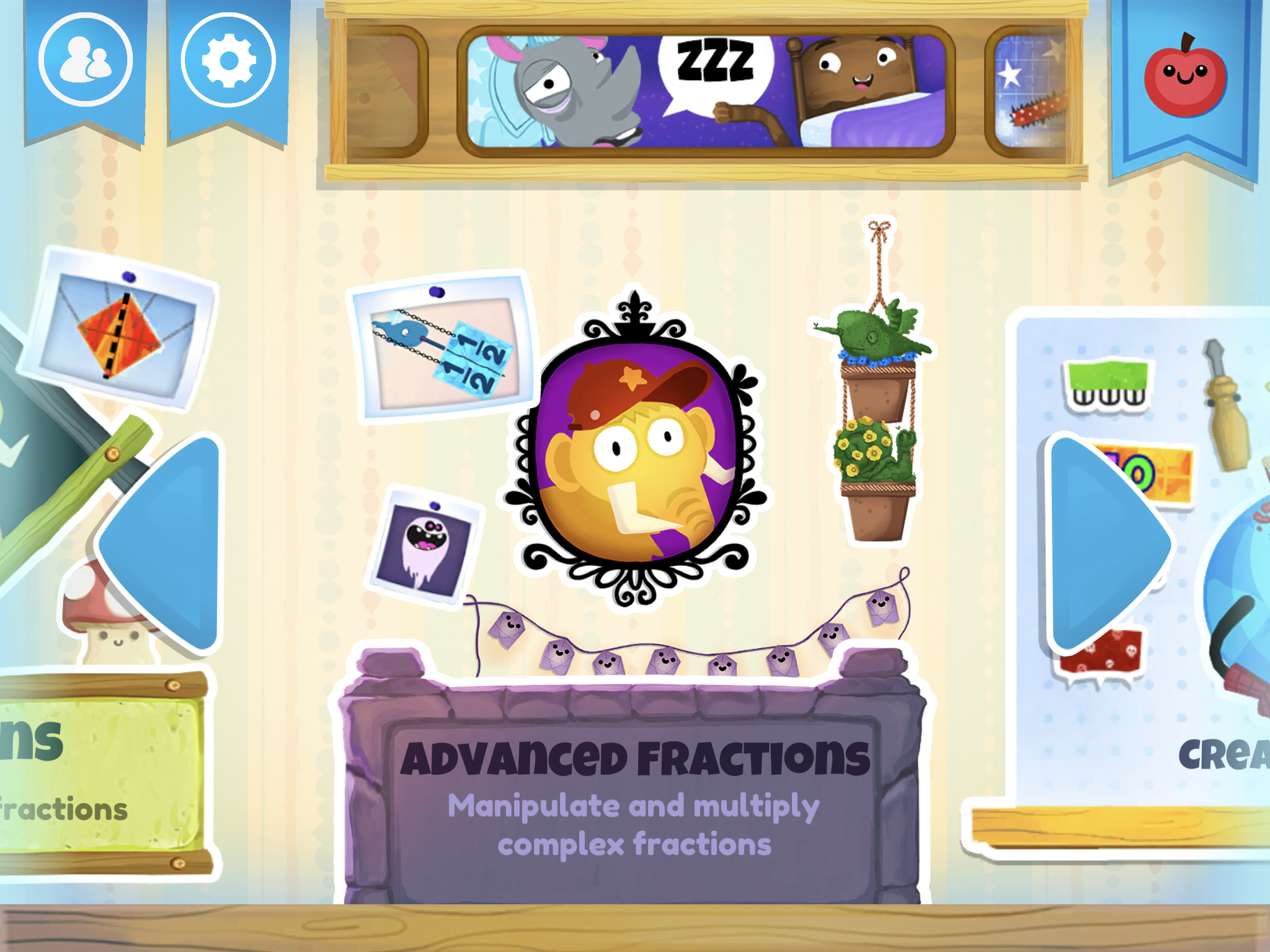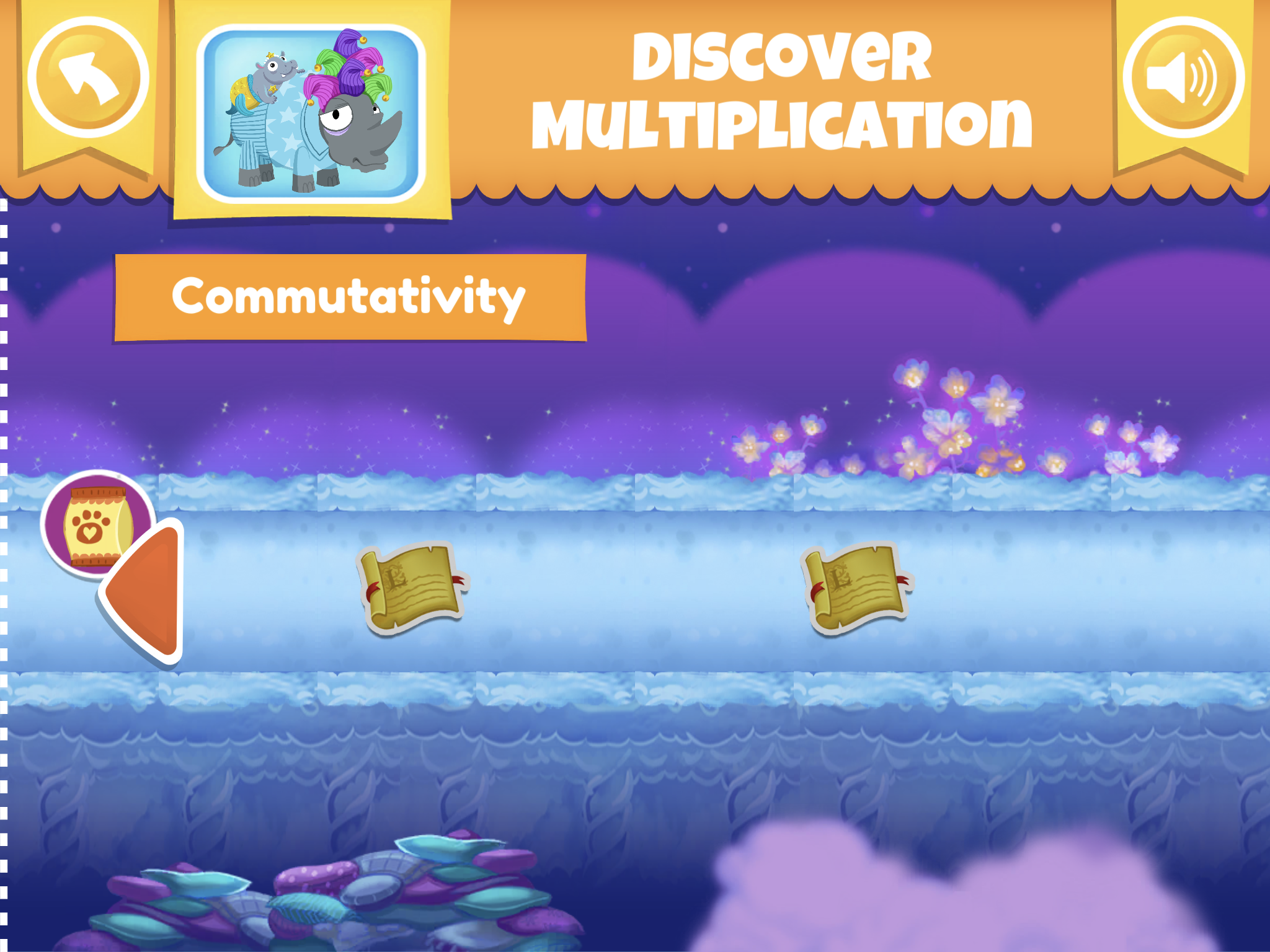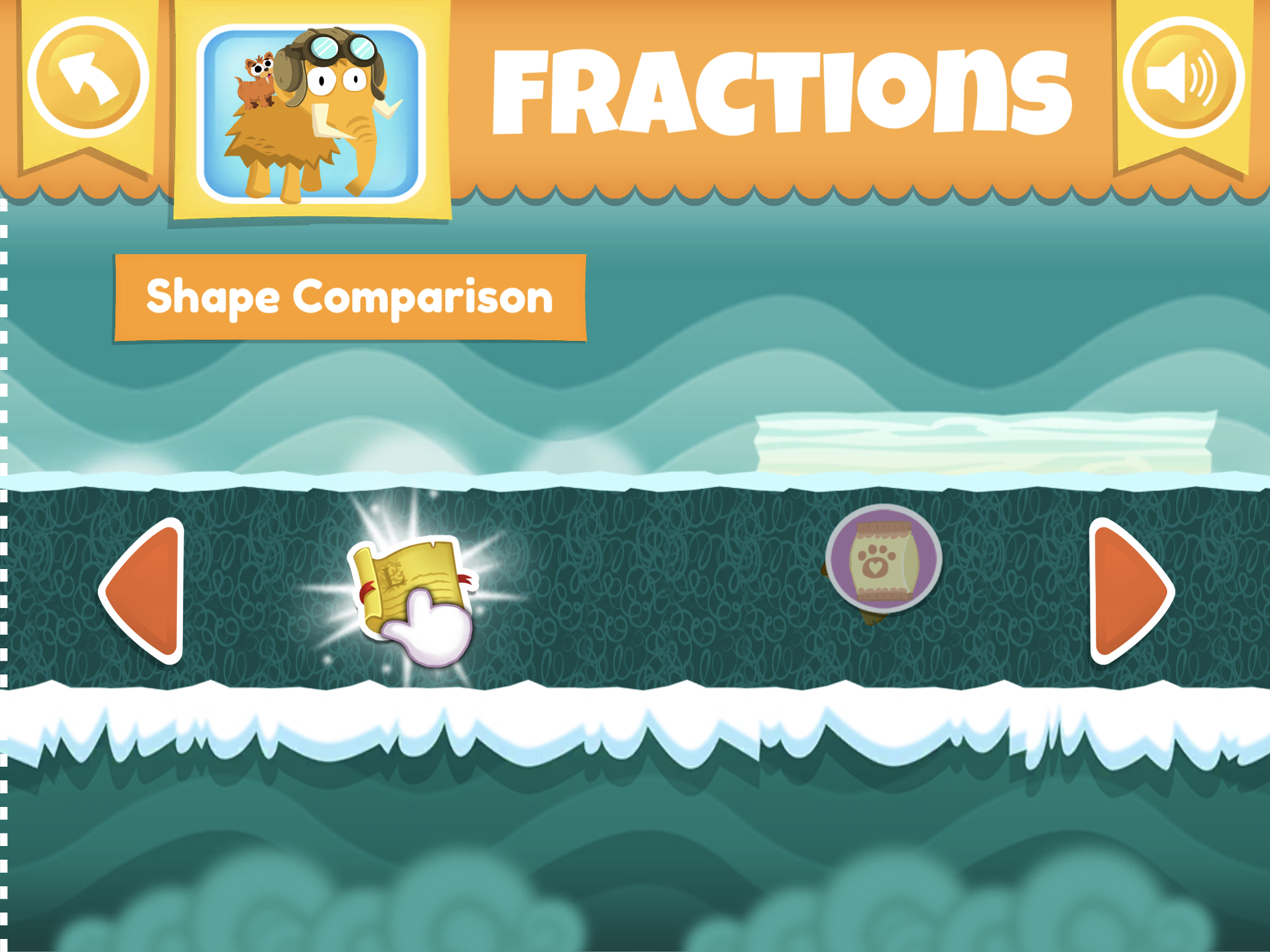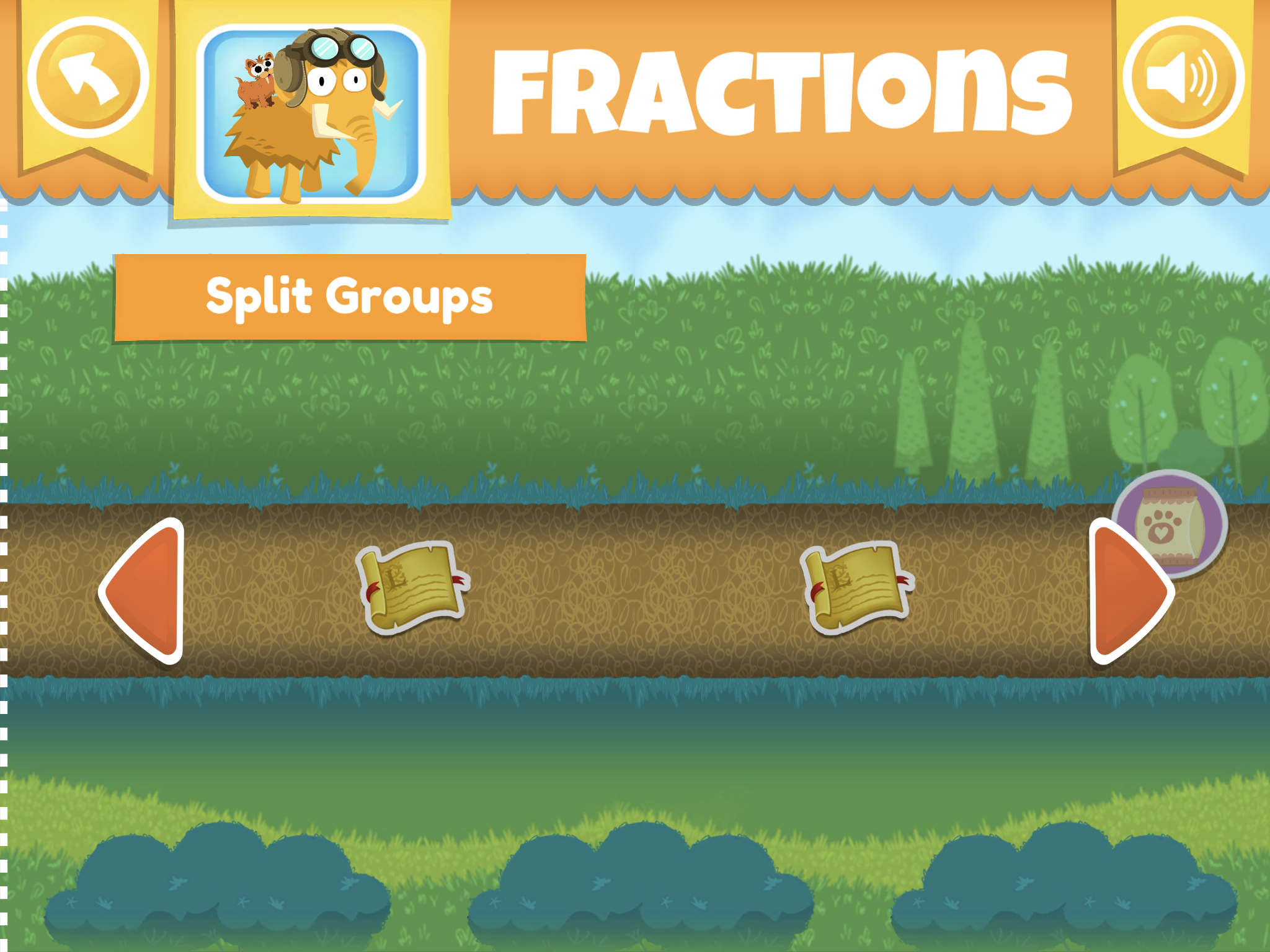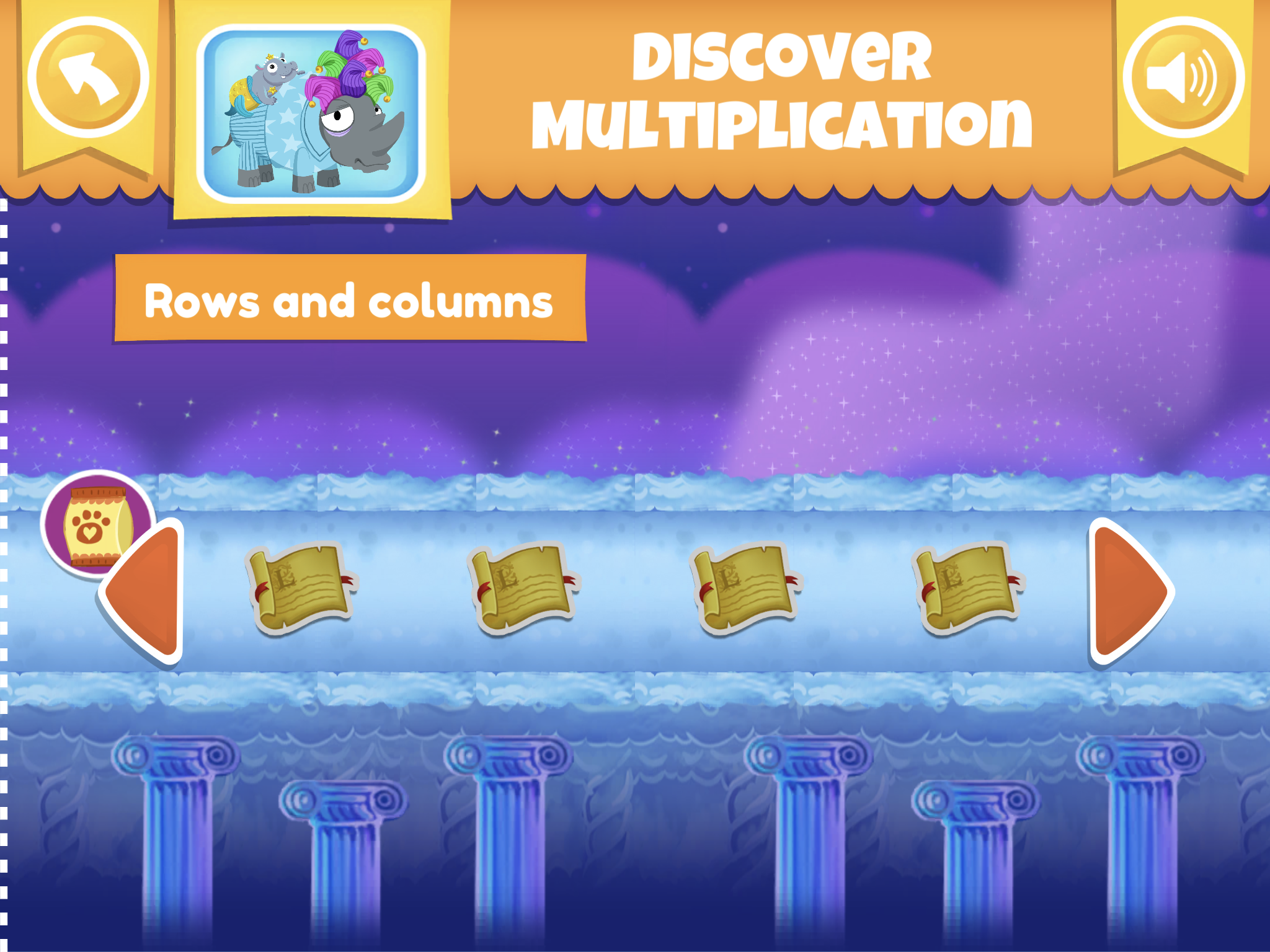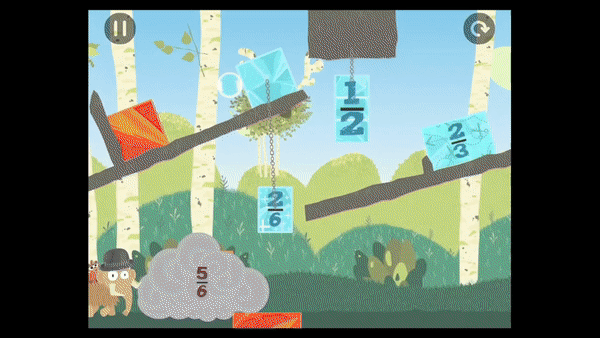Math Makers - A Review for Teachers and Parents
Topic(s): Addition, Subtraction, Multiplication, Place Value, Fractions
Platform: Tablet, Phone (iOS; Google Play)
Developer: Ululab
Math Makers is an educational math game developed by Ululab (the creators of Slice Fractions), and was released in the summer of 2021. The game was a finalist for the Best Learning Game Award at the Games for Change Festival in 2022. Games for Change (G4C) is an annual festival in which developers, educators, funders, policymakers and more, share various projects and give talks about games and other media. It was also awarded a gold medal at the International Serious Play Awards (K-12).
Math Makers is currently available on the iOS and Google Play app stores. Anyone can play for free via a 7 day free trial, but will need to subscribe afterwards.
General Math Content and Gameplay
At its heart, Math Makers is a puzzle game. Students solve puzzles that implicitly embody mathematical concepts and ideas. The game features hundreds of puzzles that span across a variety of topics, including addition, subtraction, multiplication, place value, and fractions. Regardless of topic, the goal of each puzzle is to clear the ice and lava blocks to create a pathway for the mastodon (or other animal). Each topic contains subtopics, each with their own puzzles. For example, the “Big Numbers” topic contains puzzles for skip counting, comparing numbers, hundreds, and so on.
It is important to note that puzzles in this game also include an element of physics. Students will need to manipulate large boulders and angled pieces of wood to change the trajectory of falling blocks. As you continue to solve puzzles, you’ll eventually acquire cool accessories to outfit the animals.
Multiplication Gameplay and Educational Value
The multiplication section of the app features several puzzles for grouping, rows and columns, and the commutative property. To integrate multiplication into the gameplay, the designers created a mechanic that creates multiple groups/copies of objects. The image above is an example. To solve this puzzle, students must understand that the number written on the machine represents the number of groups of objects (blocks) it will create copies of.
The multiplication puzzles become much more challenging once the game introduces commutativity and arrays, and players are given the freedom to manipulate the numbers of copies the machine can make. In the puzzle in the video below, students must recognize that four groups of five ice blocks will “cancel out” five groups of four lava blocks, clearing a pathway for the rhino.
In other words, four groups of five objects (4 x 5) is equivalent to five groups of four objects (5 x 4). Students are (at least implicitly) engaging with the commutative property of multiplication. Although the concept is implicit in the game, this puzzle can be mapped to the Common Core standard 3.OA.B.5.
The multiplication puzzles naturally lend themselves towards thinking about objects in terms of groups — the kind of thinking that underpins the concept of multiplication. By the time I reached the final puzzles in this part of the app, I realized it was a necessity to think this way. I found myself thinking conceptually, and asking myself questions, for example, “how many groups of 3 ice blocks do I need to cancel out 4 groups of 3 lava blocks?”
Fractions Gameplay and Educational Value
If you are familiar with Ululab’s Slice Fractions game, you have an idea of what to expect from the fraction puzzles in Math Makers. Players slice ice (or lava) blocks to cool out lava (or ice) blocks and clear a path for the mastodon. The slicing action represents partitioning in mathematics, and many puzzles can be mapped to the Common Core standard 3.G.A.2, in which students partition shapes into parts with equal areas.
There are several interesting things of note. First, fractions do not appear in the initial puzzles in the way we are used to seeing them in curricula. Instead, the designers chose to model fractions solely through representations in the initial puzzles. There is a gradual increase in the complexity of representations (and puzzles), and eventually, fractions formally appear.
Second, there are new addition mechanics with fractions. Once players progress to the fraction puzzles with addition blocks, they can add fractions with common denominators. In the picture above, players need to clear the lava block that represents 4/6. To do so, players need to slice two pieces of the 1/2 that is comprised of six equal parts (two-sixths) and add them to the given 2/6 block to create 4/6. Most of the puzzles with this addition mechanic are aligned to Common Core standard 4.NF.B.3 (b and c). The game does not allow players to add blocks that do not have a common denominator, because adding produces an answer that can be calculated easily only when the quantities are sliced into parts that are the same size.
Third, towards the end of the fraction levels, the game provides opportunities to learn about (at least implicitly) the relative sizes of fractions. For example, when slicing a block that represents 1/2 in half, the result is a block that represents 1/4. Likewise, when slicing a block that represents 1/4 in half, the result is a block that represents 1/8. This is demonstrated in the image above. Children often think a fraction like 1/8 is larger than a fraction like 1/4 because 8 is larger than 4. Being able to visualize that 1/8 is a smaller slice than 1/4 is an important concept to understand.
The fraction section of the app features several puzzles for related topics, including equivalent fractions, adding fractions, and partitioning shapes. The video above is a demonstration of one of the equivalent fraction puzzles.
Numbers Gameplay and Educational Value
Math Makers is somewhat of a catch-all game. In addition to the multiplication and fraction puzzles, the game has a “Big Numbers” section that features puzzles for addition and subtraction, skip counting, and place value. There aren’t many new mechanics or additions compared to the other sections of the app. However, in some of these levels, the player is given a toolbox that may contain numbers, angled pieces of wood, or the grouping machines from the multiplication puzzles. The player must use these tools to set up the level, and then press the play button at the top right of the screen to see if their plan was successful. See the image above.
The skip counting levels are quite creative. The player has to create a pathway for the donkey to cross via skip counting, starting with 10’s (a 2nd grade standard - 2.NBT.A.2). A spider seemingly weaves an ice block that represents the number you place within the web. The bigger the number, the bigger the block.
I especially enjoyed how some of the puzzles required students to decompose numbers. Students progress from decomposing 2-digit numbers to 3-digit ones.
Most of the puzzles in this “Big Numbers” section can be mapped to second grade standards within the operations and algebraic thinking (2.OA), or number and operations in base ten (2.NBT) strands. Students will practice their mental math, including addition and subtraction, and there are opportunities to learn about place value, number decomposition, and grouping.
Feedback and Miscellaneous
Over the course of my time with the game, I found a few mathematical errors or puzzle bloopers. For example, when I attempted to solve the puzzle on the right, I cut 2/3 in half, and the result was 1/3 and 3/8, instead of two copies of 1/3. Obviously, 3/8 is not half of 2/3. This happened because I did not slice the block precisely, but there are other times when slicing a block imprecisely does yield the correct size. It’s as if the designers are aware that students are not going to slice blocks perfectly.
In a separate instance, I failed a puzzle through no fault of my own. The video below is an example. After correctly setting up the grouping machines to produce 13 copies, one of the ice blocks did not make contact with a lava block, requiring me to restart the level. Although I was able to progress using the same strategy the second time, it was interesting to note that you can fail even when you find the correct solution. However, it is extremely rare and likely an oversight. This only occurred once during my time with the game.
Other than these issues, I have very few gripes about the game. I would have liked an adjustable volume slider, and the ability to go back to any level I completed for more practice. Currently, you can only mute or unmute the game, and you’ll have to replay levels over again if you wish to replay a specific level (especially if it’s further along in a sequence of levels).
One of the most interesting aspects of Math Makers is a “Creative Mode”, where students can create their own puzzles for others to play! It is reminiscent of Nintendo’s Super Mario Maker 2, in which players design their own levels. Admittedly, I did not spend too much time in this mode. However, it is a nice addition for kids who are into designing.
Summary
Research shows that most educational math games are used as drill-and-practice tools, or are drill-and-practice games (Cayton-Hodges et al., 2015; Pan et al., 2022). However, Math Makers is a fun, fresh, and integrated math game, and with its breadth of content, it contains something for everyone. The game does a wonderful job of embedding mathematical concepts into the gameplay, and each puzzle requires careful planning and critical thinking. As I continued to play, it was not surprising to me that this game received so many accolades or positive reviews from parents.
If you’re a teacher, parent, or administrator wanting a solid math game for your kid(s) or student(s), I highly recommend this game.
I would love to know what you think! Please let me know your thoughts or questions in the comments!
Challenge
Math Makers elicits critical and conceptual thinking to solve difficult puzzles.
Bonus
Math Makers offers bonus features, including accessories and a creative mode.
Progression
Math Makers features a variety of subtopics that inspire a real sense of progression and difficulty.
